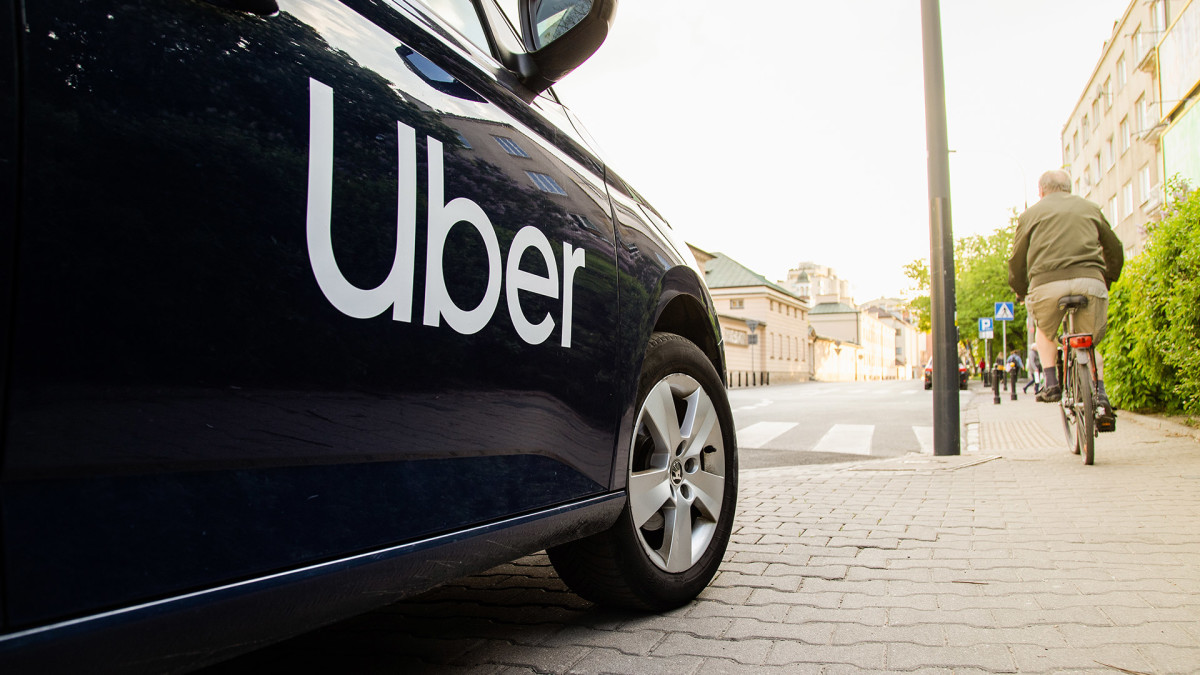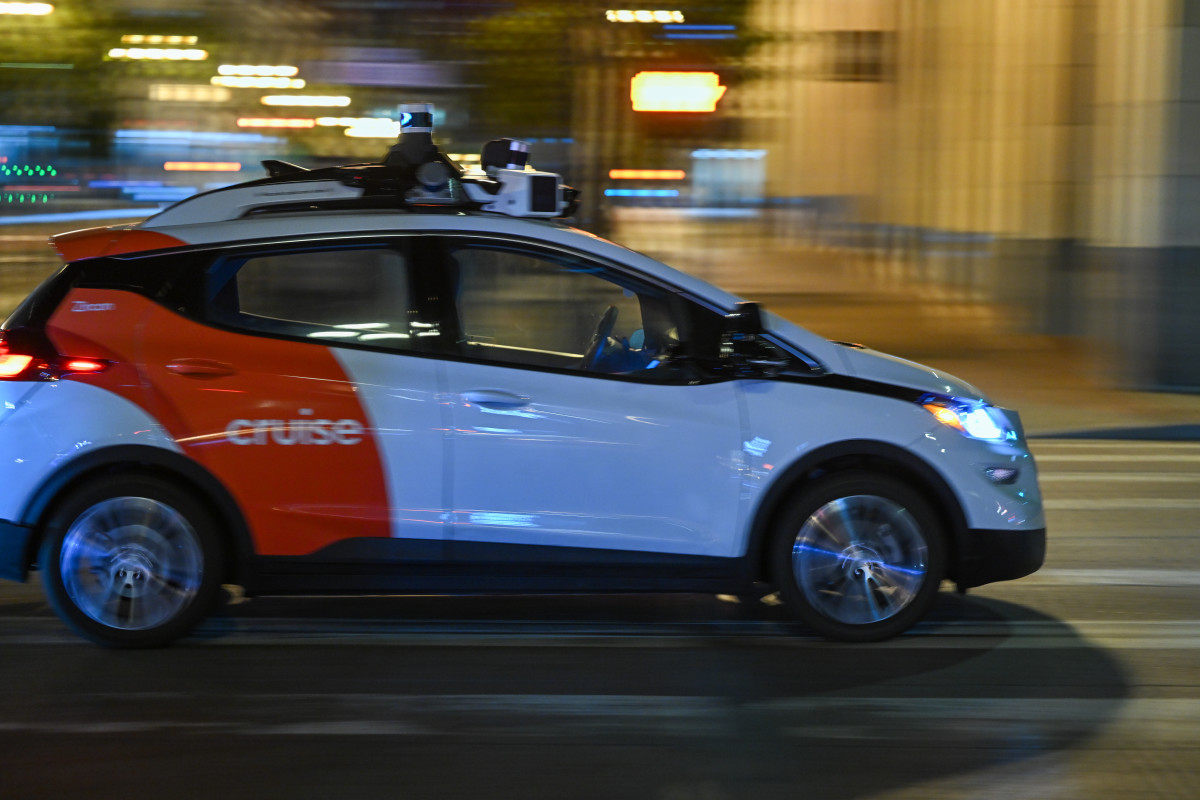
If you ask people like Cathy Wood of ARK Investment and Tesla's Elon Musk what the future of mobility would look like, they would probably say one word: robotaxis.
It is very easy to see why.
Companies like Google's (GOOGL) Waymo and General Motors' (GM) Cruise have offered everyday people a glimpse of a future that would have only been a reality in the best science fiction films and TV series: one where humans do not have to drive.
Simply, an app allows them to summon a car that operates itself to get its passengers to their destinations.
A new landmark partnership would make this easier, but it also raises concerns about the people it leaves behind.

Uber's robotaxi pivot
Uber (UBER) revealed on Aug. 22 a "multiyear strategic partnership" with Cruise to offer rides in its autonomous vehicles through the Uber ridesharing application.
Beginning in 2025, Uber users will be able to ride in one of Cruise's Chevrolet Bolt autonomous vehicles for "qualifying rides."
The venture with Cruise is not Uber's first foray into the world of autonomous vehicles. The multinational tech and transportation company is also partnered with Google's Waymo to offer autonomous rides, and has even dabbled with its own Uber-branded robotaxis as recently as 2022.
The motive behind this partnership, according to both Uber and Cruise CEOs, is to expand the reach of autonomous vehicles to as many people as possible. By partnering with Uber, Cruise is able to cast the widest net for potential customers as it can.
“Cruise is on a mission to leverage driverless technology to create safer streets and redefine urban life," said Marc Whitten, CEO of Cruise. "We are excited to partner with Uber to bring the benefits of safe, reliable, autonomous driving to even more people, unlocking a new era of urban mobility."
In a statement to Gizmodo, a Cruise spokesperson said that the first city with robotaxis that can be hailed through the Uber app will be either Phoenix, Dallas or Houston.
Uber vs. Taxi vs. Robotaxi: evolution of displacement
Cruise's partnership with Uber comes as the GM-backed robotaxi venture is making its grand comeback.
Previously, Cruise had its license suspended in California following an October 2023 incident where a self-driving vehicle hit and dragged a pedestrian who was jaywalking in San Francisco. As a result, the firm temporarily shuttered its robotaxi operations, restarting with supervised rides in Phoenix, Houston, and Dallas in June 2024.
Uber's partnership with the two largest names in robotaxis presents an interesting dilemma in the grand scheme of transportation's future.
Uber and other ride-sharing services like Lyft have inadvertently replaced the taxicab in major cities like New York, where its 13,000 medallion-wielding drivers compete in a sea of more than 100,000 drivers for ride-sharing apps.
Throughout its existence, Uber battled its drivers in multiple cities thanks to its business model of misclassifying its drivers as independent contractors rather than employees.
But, with robotaxis, the drivers are cut from the equation.
More Business of EVs:
- Waymo finds new way to bring chaos to quiet city streets
- Gavin Newsom's 'EV mandate' is under U.S. Supreme Court threat
- BMW's clever, new EV app is a privacy nightmare
In the summer of 2023, taxicab drivers and rideshare app drivers in Uber's hometown, San Francisco, spoke out against the expansion of Waymo and Cruise in the city, stating that they add competition and shrink their earnings at a time when the costs of being a taxi driver or rideshare driver are increasing.
Jose Gazo, a seven-year Uber driver told the San Francisco Standard in June 2023 that he finds himself driving longer hours and making less money.
“We’re already seeing it,” Gazo said. “With business going like this, we’re going to go homeless.”
The California Public Utilities Commission on August 10, 2023, granted Waymo and Cruise the ability to operate 24/7 with an unlimited fleet of vehicles in all areas of the city.
Before the measure was passed in a 3-1 vote, CPUC officials listened to six hours of public comment, including that of Rosine, a San Francisco-based Uber driver.
"If you allow self-driving taxis to expand, it's going to take jobs away from families. I'm a single mom," the BBC reported Rosine saying.
However, experts think this concern is overhyped.
"These things are expensive. The Waymo cost of that whole vehicle... is about $300K. That's not going to replace a driver financially anytime soon," says @emilmichael about robotaxis. pic.twitter.com/vuKGsoorsD
— Last Call (@LastCallCNBC) June 24, 2024
In a June 2024 appearance on CNBC's "Last Call," former Uber Chief Business Officer Emil Michael argued that there are practical and financial barriers before robotaxis from Waymo and Cruise can effectively emulate something like Uber.
Federal regulation limits manufacturers to producing 2,500 driverless cars per year, which can limit the number of vehicles that can hit the streets.
“It’s always around the corner, but it takes more time than people think, Bryan, because of regulation, the cost of the vehicles that do it well, and also just the density of enough driverless cars in any city to have a ride take 10 minutes or less to get to your door when you order one,” Michael said.
“And these things are expensive. The Waymo cost of that whole vehicle, with all the spinning thing you see on top of the car, is about $300,000. That’s not going to replace a driver financially anytime soon.”
Uber Technologies, Inc., which trades on the New York Stock Exchange as UBER, was up 1.35% at the closing bell, trading at $74.30 per share at the time of writing.
Related: Veteran fund manager sees world of pain coming for stocks







